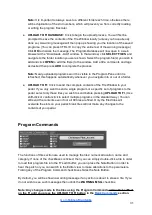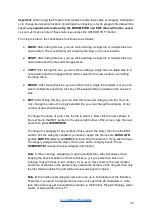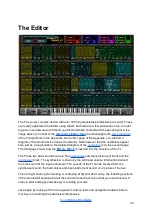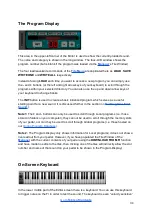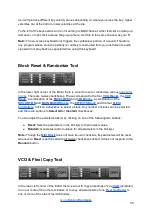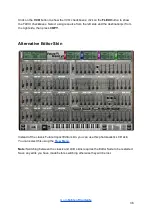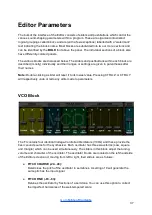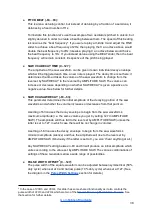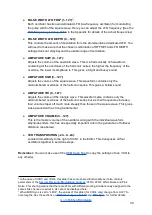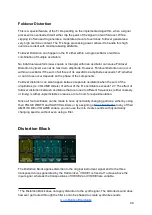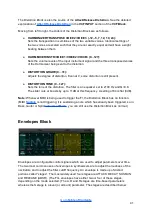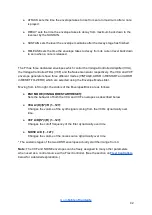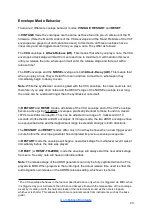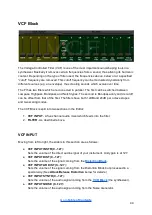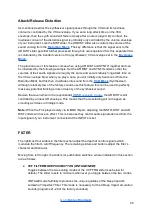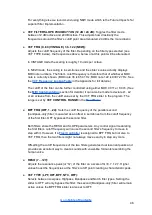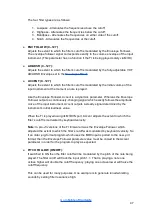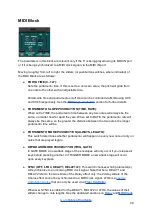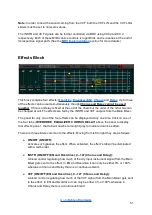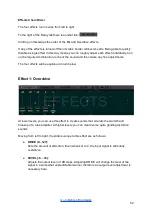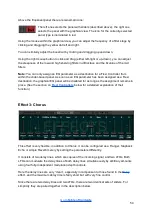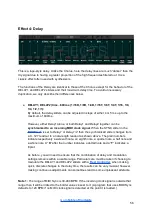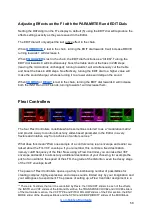
Envelope Mode Behavior
There are 3 different envelope behavior modes:
VINTAGE
,
RESTART
and
RESET
.
In
VINTAGE
mode the envelopes are the same as those found in pre-v3 versions of the FI
firmware. (Here the D and S sliders of the VCA envelope and the S and R sliders of the VCF
envelopes are greyed out and cannot be used.) In this mode, all three envelopes have a
linear
ramp and are triggered each time you play a note. They differ as follows:
The
VCA
envelope is
Attack-Release (AR)
. This means that when you play a note, the VCA
envelope’s attack stage will start from zero and rise to maximum. It will maintain this level
until you release the note, whereupon it will enter the release stage and fade out with a
release time.
9
The
VCF
envelope and the
NOISE
envelope are both
Attack-Decay (AD)
. This means that
when you play a note, they will start from zero and rise to maximum, whereupon they
immediately begin to decay to zero.
Note:
While the synthesizer sound is gated with the VCA envelope, the noise source is not;
therefore, if you play short notes and the DECAY stage of the NOISE envelope is set long,
the noise can be sustained longer than the synthesizer note itself.
In
RESTART
and
RESET
modes,
all
sliders of the VCA envelope and of the VCF envelope
become active giving
full ADSR
envelopes, practically identical to those found in a classic
1970s 3-oscillator monosynth. They can be adjusted in a range of 1 millisecond to 10
seconds. Unlike the AD and AR envelopes of Vintage mode, the two ADSR envelopes have
an
exponential
ramp and their adjustment range is extended strongly in both directions.
The
RESTART
and
RESET
modes differ only in how they behave when a new trigger event
occurs before the envelope generator has completed its previous envelope sequence:
In
RESTART
mode the envelope will begin a new attack stage from
whatever level
it was at
immediately before the note was played;
In
RESET
(or
RESET-TO-ZERO
) mode the envelope will always start the new attack stage
from zero. So every note will have an identical attack.
Note:
The release stage of the ADSR generators can only be fully exploited when the FI is
played via MIDI. When played via the audio input, the actual release time used is either the
audio signal’s own release
or
the ADSR’s release setting, whichever is shorter.
9
The VCA envelope behaves in the manner described above only when it is triggered via MIDI; when
it is triggered by your instrument, then the sound decays
either
with the release time of the envelope
as set by its slider
or
with the natural release of the instrument’s sound as the note is stopped,
whichever is shorter. This allows for much more natural sounds from instruments such as the bass
guitar.
43
Содержание Future Impact v3
Страница 8: ...Top Panel Controls and Display Connections Go to Table of Contents 8...
Страница 84: ...Appendix Go to Table of Contents 84...
Страница 85: ...Algorithm Block Diagrams Go to Table of Contents 85...
Страница 86: ...Go to Table of Contents 86...
Страница 87: ...Go to Table of Contents 87...



